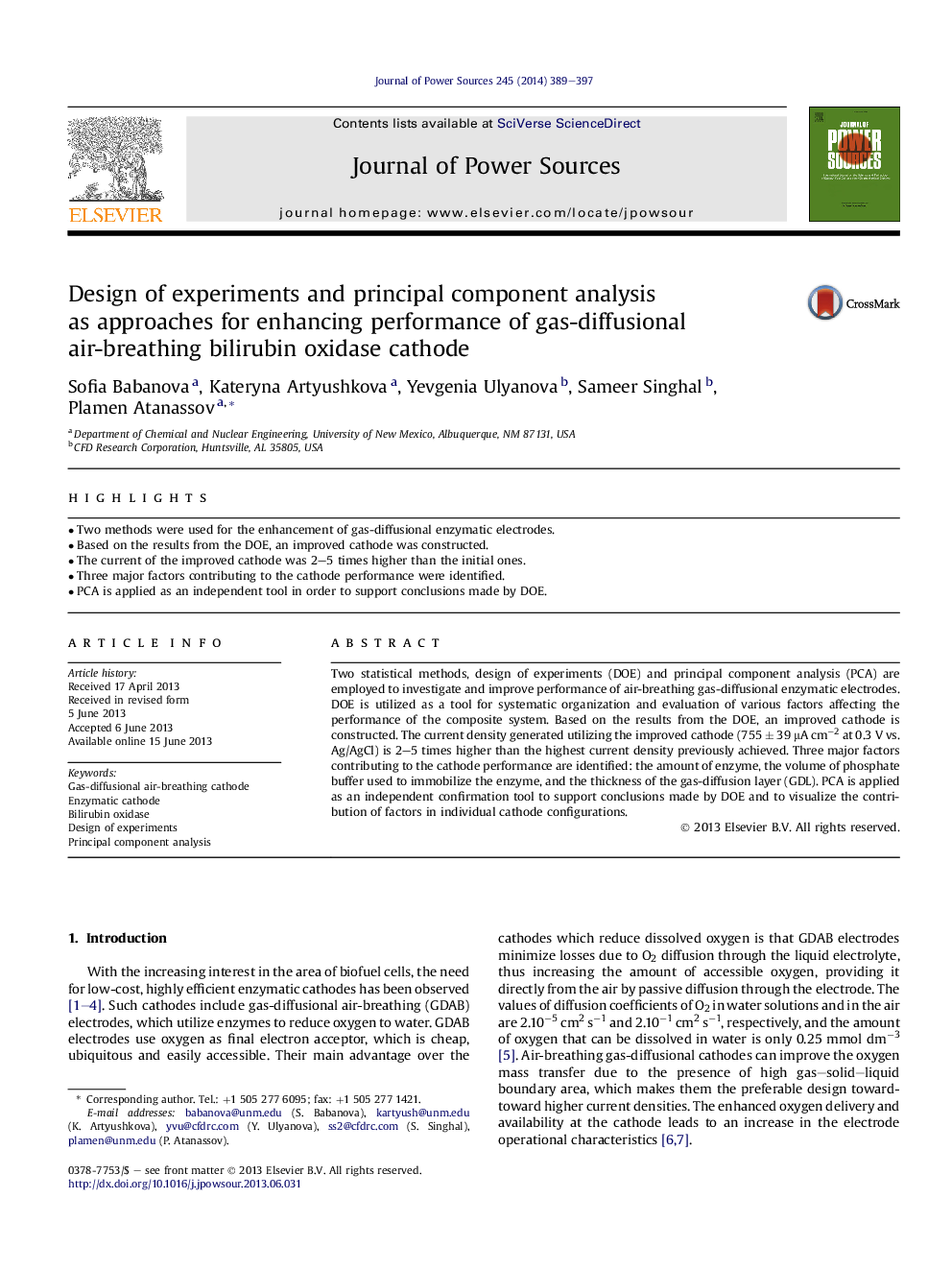| Article ID | Journal | Published Year | Pages | File Type |
|---|---|---|---|---|
| 7738700 | Journal of Power Sources | 2014 | 9 Pages |
Abstract
Two statistical methods, design of experiments (DOE) and principal component analysis (PCA) are employed to investigate and improve performance of air-breathing gas-diffusional enzymatic electrodes. DOE is utilized as a tool for systematic organization and evaluation of various factors affecting the performance of the composite system. Based on the results from the DOE, an improved cathode is constructed. The current density generated utilizing the improved cathode (755 ± 39 μA cmâ2 at 0.3 V vs. Ag/AgCl) is 2-5 times higher than the highest current density previously achieved. Three major factors contributing to the cathode performance are identified: the amount of enzyme, the volume of phosphate buffer used to immobilize the enzyme, and the thickness of the gas-diffusion layer (GDL). PCA is applied as an independent confirmation tool to support conclusions made by DOE and to visualize the contribution of factors in individual cathode configurations.
Related Topics
Physical Sciences and Engineering
Chemistry
Electrochemistry
Authors
Sofia Babanova, Kateryna Artyushkova, Yevgenia Ulyanova, Sameer Singhal, Plamen Atanassov,
